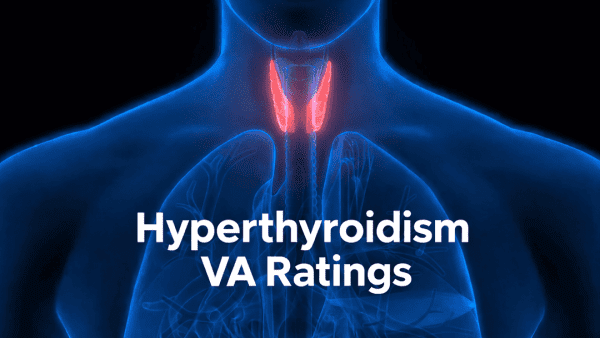Looking for Expert-Level VA Claim Answers?📱Call Us Now! 737-295-2226
Filing a VA claim shouldn’t feel like flying instruments-only through a thunderstorm—but too often it does (I know!)
You gather your records, click submit, and then…silence, a denial, or a lowball rating that doesn’t reflect the reality of your daily symptoms and negative impacts to your work, life, and social functioning.
I’ve helped 25,000+ veterans win, service-connect, and increase their VA disability ratings faster, and I can tell you this with confidence:
Most VA claim failures aren’t because the veteran doesn’t deserve benefits—they happen because of avoidable mistakes!
In this high-value article from VA disability expert Brian Reese, I’m going to break down the top 5 mistakes I see every week, show you why they sink VA claims, and give you step-by-step fixes you can use today (even if you’ve already filed, been denied, have given up, or lost hope).
I’ll also share real-world examples so you can spot the issue in your own file and correct course immediately.
Before we jump in, here’s the simple framework I teach every veteran—The VA Claims Insider Golden Circle of a winning VA disability claim:
- Current Diagnosis in a medical record.
- In-Service Event, Injury, Disease, or Aggravation.
- Medical Nexus (“at least as likely as not” link between #1 and #2).
- Severity of Symptoms documented by frequency, severity, and duration—plus functional impact on work, life, and social functioning (this drives your final rating).
Add my SEM Method—Strategy + Education + Medical Evidence—and you’ve got a proven path to the VA rating and compensation you’ve earned.
Let’s eliminate the landmines and get ready to crush your VA claim!
Table of Contents
Summary of Key Points
- Most VA claim failures are avoidable—they happen because of common mistakes, not because veterans don’t deserve benefits.
- The Golden Circle of a winning VA claim: (1) Current diagnosis, (2) In-service event, (3) Medical nexus, and (4) Documented severity and functional impact.
- Avoid the top 5 VA disability claim mistakes—missing diagnosis, weak nexus, minimizing symptoms, filing kitchen-sink claims, and poor appeals—to maximize your benefits.
- The VA Claims Insider SEM Method (Strategy + Education + Medical Evidence) gives veterans a proven path to higher ratings and faster results.
WATCH THIS VIDEO: 🛑 STOP Making These 5 VA Claim MISTAKES (and How to Avoid Them!)
Mistake #1: Filing Without a Current, Well-Documented Diagnosis
Why this costs you money: The VA cannot grant service connection without a current diagnosis from a qualified provider.
“I have back pain” or “I struggle to sleep” isn’t enough.
Even if you had an in-service injury, you need a present diagnosis tied to that condition.
No diagnosis = no service connection = $0.
Common ways this shows up:
- Filing for sleep apnea with a note that you snore and feel tired, but no sleep study and no formal OSA diagnosis in your record.
- Filing for migraines when your progress notes say “headaches,” but the provider never documented the migraine diagnosis or characteristics (prostrating attacks).
- Filing for mental health with self-reports of anxiety or anger but no DSM-5 diagnosis (e.g., PTSD, MDD, GAD) from a mental health professional.
How to avoid it (do this):
- Book a targeted evaluation before you file. Ask for a formal diagnosis and make sure it’s in your medical record (VA or private). If you don’t have a treating provider, get one.
- For conditions like OSA, complete the gold-standard test (in-lab polysomnography or a VA-accepted equivalent).
- For mental health, schedule a comprehensive mental health assessment and ensure the provider documents diagnostic criteria and functional impairment (work, relationships, daily living).
- Consider a Disability Benefits Questionnaire (DBQ) for high-value conditions—used strategically, not for everything.
- Keep copies of every record you’ll submit; upload them with your claim as a Fully Developed Claim (FDC).
Real-world example:
Staff Sgt. Lopez files for migraines. His VA notes say “recurring headaches; takes OTC meds.” He’s denied—no formal migraine diagnosis, no frequency/severity details.
Fix: He sees a neurologist, receives a migraine diagnosis, documents prostrating attacks 2–3 times per month, and submits a headache DBQ with a short lay statement from his spouse describing how he lies in a dark room for hours. On a supplemental claim, he’s granted 30%.
Mistake #2: Submitting a Claim With a Weak or Missing Nexus
Why this costs you money: Even with a diagnosis and a clear in-service event, you still need a medical opinion that it’s “at least as likely as not” (50% or greater probability) that your condition was caused or aggravated by service—or caused/aggravated by another service-connected condition (secondary service connection).
Without a proper “nexus,” VA raters deny claims all day.
Where veterans get tripped up:
- Relying solely on generic C&P examiner comments instead of submitting a private nexus letter that explains the medical reasoning.
- Ignoring secondary pathways that are often easier to prove (and very valuable), like:
- Radiculopathy secondary to a service-connected back condition.
- Migraines secondary to PTSD, TBI, cervical strain, or sinusitis.
- Sleep apnea secondary to rhinitis/sinusitis, PTSD (via weight gain/meds), or GERD.
- GERD secondary to NSAID use for orthopedic pain.
- ED secondary to SSRIs/SNRIs or hypertension meds.
- Submitting nexus letters that aren’t current, accurate, or complete with no evidence-based rationale (these carry little weight and have low probative value).
How to avoid it (do this):
- Get a competent medical opinion (IMO) that uses the right legal language:
- “It is at least as likely as not (≥50%) that Veteran’s [condition] began during, was caused by, or was aggravated beyond its natural progression by [in-service event] / [service-connected condition].”
- The opinion must include a clear evidence-based rationale—medical literature, timeline, risk factors, and how your service or SC condition explains today’s diagnosis.
- If you suspect a secondary connection, tell the provider which service-connected condition is the driver and why (e.g., medication side effects, biomechanical stress, sleep fragmentation).
- Upload the nexus letter, any supporting studies, and a concise lay statement tying symptoms to your service history.
Real-world example:
Sergeant Parker has service-connected knee instability (20%). Years later, he develops low-back pain. He files direct service connection and gets denied—no documented back event in service.
Fix: He reframes as secondary: an orthopedic IMO explains how altered gait from his knee condition placed abnormal mechanical load on the lumbar spine, causing degenerative changes. Supplemental claim is granted at 20% for the back plus bilateral radiculopathy at 20% each leg—a major combined-rating boost.
Mistake #3: Minimizing Symptoms or Walking Blind Into the C&P Exam
Why this costs you money: The Compensation & Pension (C&P) exam is often the most consequential hour in your entire claim.
Many veterans “tough it out,” give short answers, or try to look squared-away when they’re actually not okay.
The examiner writes: “Symptoms mild, controlled by OTC meds. No occupational impact.”
You just talked yourself out of thousands per year.
What examiners are trained to document:
- Frequency (how often), severity (how bad), and duration (how long).
- Functional impact on work, life, and social functioning.
- For mental health, occupational and social impairment levels (this drives 0/10/30/50/70/100).
- For orthopedic issues, range of motion with pain, flare-ups, repetitive use, and guarding/spasm.
- For headaches/migraines, whether attacks are prostrating and how often.
- For OSA, CPAP use and daytime hypersomnolence.
How to avoid it (do this):
- Prepare like it’s a job interview. Review your records, your symptoms, and the rating criteria for your condition so you can speak to the boxes they must check.
- Bring a symptom journal (30–60 days is plenty). Write short entries: what happened, how long it lasted, what you couldn’t do.
- Be uncomfortably honest—no bravado. If driving triggers panic, say so. If you miss work twice a month from migraines, say so.
- If you have flare-ups, describe them clearly (“3 days per week, pain 8/10, can’t bend to tie shoes”). DeLuca and Sharp require examiners to account for functional loss during flares/repetitive use.
- Consider bringing a brief spousal/roommate statement describing what they see.
- Never exaggerate. Consistency across your VA notes, private records, and the exam is critical.
Real-world example:
Corporal Nguyen attends a C&P for PTSD. He talks around his symptoms, trying to look composed. The examiner notes “mild symptoms; no significant occupational impact,” and he’s rated 10%.
Fix: On increase, he prepares a symptom log and buddy letter from his spouse documenting weekly panic attacks, sleep 4 hours with nightmares, and isolation. The examiner checks “occupational and social impairment with reduced reliability and productivity” with symptoms properly documented on the DBQ for PTSD Increase. He’s increased to 50%.
Mistake #4: The Kitchen-Sink Claim (Too Many Conditions, Wrong Claim Type, No Strategy)
Why this costs you money: I know the temptation—“I’ll file everything at once and make the VA sort it out.”
The problem: more issues = longer processing time, more C&P exams, more room for errors, and a higher chance your file becomes a mess.
You also risk burying your best high-value issues among a dozen low-value ones.
The better way: file with Strategy.
Focus first on high-value conditions (those that commonly rate 30%+ and/or stack well with secondaries), and submit as a Fully Developed Claim so the VA rater has a tight, well-organized package.
High-value focus areas I recommend:
- Mental Health (average rating ~70% when well-documented).
- Migraines (30%–50% with prostrating attacks).
- Sleep Apnea (50% with CPAP; secondary pathways matter).
- Back/Neck with radiculopathy (separate ratings per nerve/side).
- Tinnitus (10%) + Hearing Loss (variable).
- Secondary claims tied to existing SC conditions (huge lever).
How to avoid the kitchen sink (do this):
- Limit each claim to 1–3 conditions max, all fully developed (diagnosis, nexus, evidence). You can file additional claims later—your benefits last for life; the process is never “over” unless you quit.
- Submit organized PDFs: medical records, nexus letters, DBQs, lay statements. Label them clearly (e.g., “Migraine_DBQ_2025-08-25.pdf”).
- Track combined rating math so you know what moves your needle. For example, going from 70% to 90% requires more than a simple 10; it’s about the VA’s “whole person” fuzzy math.
- Use FDC whenever possible; Standard claims tend to take longer and invite more development letters.
- If you must include lower-value claims, stage them in a later filing.
Real-world example:
Petty Officer Hall files 12 conditions at once. The claim drags for 13 months, multiple exams contradict each other, and the VA rater grants 3 issues at low percentages.
Fix: On the next round, Hall files a focused FDC for migraines (DBQ + spouse statement), cervical strain with radiculopathy (ortho DBQ), and OSA secondary to rhinitis (nexus + sleep study). The decision comes faster and jumps him from 70% to 90%.
Mistake #5: Not Appealing Strategically (or missing deadlines)
Why this costs you money: Many veterans accept an initial denial or low rating and move on.
They think it’s over and have to accept what the VA decided.
It’s never over unless you quit!
Others appeal, but choose the wrong lane or submit no new evidence, expecting a miracle.
Meanwhile, the effective date—the key to years of back pay—slips away.
Know your three lanes (modern AMA system):
- Higher-Level Review (HLR) – A senior reviewer re-looks at the same evidence. Great for clear errors (wrong criteria applied, evidence overlooked, “duty to assist” failures). No new evidence allowed. You can request an informal conference.
- Supplemental Claim – You submit new and relevant evidence (e.g., nexus letter, DBQ, private treatment notes, buddy statements). This is the workhorse lane for most veterans.
- Board Appeal – Direct docket (no new evidence), evidence docket (submit more within 90 days), or hearing docket (longer wait). Use when you need a real legal/medical disagreement adjudicated.
How to avoid appeal mistakes (do this):
- Calendar your deadlines (generally 1 year from the decision date to choose a lane). Don’t forfeit your effective date.
- If the VA rater misapplied criteria or ignored favorable evidence, choose HLR and argue the error clearly (cite the rating schedule).
- If the claim lacked a diagnosis, nexus, or severity details, file a Supplemental Claim with the missing evidence (IMO/DBQ/records/lay statements).
- If the C&P exam was inadequate (no flare-up discussion, ignored functional loss), say so and submit a better medical opinion.
- Keep your claim story consistent across lanes; don’t reinvent facts.
Real-world example:
Sergeant Major Diaz receives 10% for GERD despite daily reflux and regurgitation impacting work. Decision says “no evidence of considerable impairment of health.”
Fix: He files a Supplemental with a GI DBQ documenting persistent epigastric distress, pyrosis, regurgitation, and substernal pain with considerable impairment of health, plus a buddy letter from a coworker about missed meetings. He’s increased to 30%, back to the original effective date.
Bonus: Two Overlooked Power-Moves That Win Claims
#1. Lay & Buddy Evidence Done Right
Your words and the words of people who see you daily are credible lay evidence.
The key is specifics, not drama.
How to write it:
- State who you are and how you know the veteran.
- Describe exact symptoms/behaviors, how often, how long they last, and how they limit function (work, family, chores, driving, social life).
- Avoid medical jargon or guessing diagnoses.
- Sign, date, include contact info.
Example snippet (spouse, migraines):
“Two to three times per month, my husband lies in our bedroom with the curtains closed for 4–6 hours. He vomits about once per episode and cannot tolerate noise. We miss family events and he has called out from work approximately once per month for these episodes.”
#2. Protecting Ratings You Already Have
Know your VA Rating Code Sheet. Look for static notations, future exams, and whether your conditions are marked Permanent & Total (P&T).
Why it matters:
- Static conditions should not be dragged back for routine re-exams without cause.
- The 5-year rule (stability), 10-year rule (service connection protected), and 20-year rule (rating level protected) can prevent unfair reductions.
- If your disabilities are totally disabling and unlikely to improve, ask about P&T—this unlocks additional benefits for your family.
Quick Checklist Before You Hit “Submit”
- Do I have a current diagnosis in my records for each condition?
- Can I point to the in-service event (or a service-connected condition for secondaries)?
- Do I have a real nexus with a rationale (not just a sentence)?
- Have I documented frequency, severity, duration, and functional impact?
- Am I filing a focused FDC (1–3 high-value issues first)?
- Do I have at least one buddy/lay statement that adds credible detail?
- If I’m denied or underrated, do I know which appeal lane fits my situation?
Tape that checklist to your monitor!
Conclusion & Wrap-Up: YOU SERVED! YOU DESERVE!
Here’s the hard truth I’ve learned after working with tens of thousands of veterans over the past decade:
The VA disability system isn’t built to find reasons to grant your claim—you have to present it so clearly that granting it becomes the obvious decision.
That’s why those five mistakes are so costly—and why avoiding them changes everything.
- Get a current diagnosis.
- Build your “nexus” (including secondaries) and consider getting a nexus letter.
- Educate and prepare yourself for the C&P like your future depends on it—because it does.
- File with a VA claim strategy, not a “spray-and-pray” approach
- Appeal with purpose and evidence.
When you do these things, the VA’s “fuzzy math” starts working for you—not against you.
Your rating goes up, your benefits unlock, and you get the tax-free compensation your service earned.
If you’re stuck, frustrated, or underrated, you’re not alone.
There’s always another path forward.
My SEM Method—Strategy, Education, Medical Evidence—exists so you don’t have to fight this fight alone or guess at the next step.
Build your battle plan, assemble the right evidence, and execute!
You served. You deserve.
Now let’s get you the VA rating you’ve earned—faster, with fewer denials, and with the confidence that comes from doing it right.
If you’re stuck, frustrated, or tired of fighting alone, my team and I have your six!
📞 Call Us Right Now: (737) 295-2226
Now it’s time to get the VA disability benefits you’ve earned for serving our country.
Fellow veterans, here’s the deal:
- Don’t ever settle.
- Don’t suffer in silence.
- And don’t go it alone!
At VA Claims Insider, we’re here to help you maximize your benefits and secure the compensation you rightfully deserve.
We’ve helped 25,000+ veterans increase their VA rating—YOU could be next!
Let’s get you the VA disability benefits you deserve.
If you need expert help navigating the VA claims process, our team of VA claim coaches is ready to educate and empower you to victory!
Want to Learn How to Increase Your VA Rating Fast Plus Get $19,725+ Worth of High-Value VA Claim Resources FREE?
I’m about to make you one of the craziest offers I’ve ever made…
Why would I do this?
A few reasons:
- GOD – I believe God put me here on earth to serve Veterans. You are my purpose for existing.
- FINANCIAL FREEDOM – I want to help you change your life by getting more tax-free compensation and benefits you’ve earned from the VA.
- JUSTICE & VALIDATION – I want you to get the justice and validation you deserve for serving our country.
Okay Brian, what is this crazy offer?
➡️ First, I’m going to let you join our #1 rated VA Claims Insider Elite program today where you’ll learn how to potentially increase your VA rating faster (with no fee up-front – if we don’t win, you don’t pay). Click HERE to view our published Pricing Guide.
➡️ Second, I’m going to gift you $19,725+ worth of high-value VA claim resources for FREE right now just for signing up today.
Fellow Veterans: Don’t Miss The “Got Your Six” Bonus Offer
Here’s a sliver of what you get TODAY:
✅ Insider Portal + Personal Coach – From day one, you’re not alone anymore. You’ll be plugged into our private Insider Portal AND matched with your very own Coach. Inside: 40+ live classes a month, step-by-step tutorials, videos, and templates. This is your battle plan to finally break free from the VA maze and win faster. ($5,000 VALUE)
✅ 24/7/365 Mastermind Access – Imagine having an entire army of experts and fellow veterans on call, day or night. That’s what you get in our LIVE 24/7/365 mastermind. Real veterans. Real answers. Breakthroughs when you need them most. ($564 VALUE)
✅ The Insider’s Guide to Tinnitus – This is the #1 claim nearly every veteran qualifies for…but most get wrong. We’ll hand you the exact playbook to file it right, fully documented, so you don’t leave thousands on the table. ($1,000 VALUE)
✅ Dependent’s Scholarship Secret – What if your service could also help pay for your spouse or kids’ education? We’ll unlock a little-known, direct-award scholarship that changes your family’s future in an instant. ($5,000 VALUE)
✅ 100% P&T Roadmap – The holy grail. If eligible, we’ll show you the exact path to P&T disability: no property taxes, insane additional benefits, and $4,000+ per month — tax-free, for life. Imagine the peace in knowing the VA won’t re-evaluate you again. ($4,000 VALUE)
TOTAL VALUE SO FAR TODAY = $15,564
I’m Also Gifting You These 3 FREE Bonuses Right Now
💵 [BONUS #1] The “SEM Method Blueprint” with video explainer so you know HOW to WIN your VA Claim FASTER, regardless of past denials or the VA claims backlog ($1,997 VALUE)
💵 [BONUS #2] Members-only access to VetNext AI the world’s #1 AI Chatbot for VA disability claims ($1,164 VALUE)
💵 [BONUS #3] Members-only discounted pricing to our preferred provider network for DBQs, Nexus Letters, Mental Health Evaluations, and more ($1,000 VALUE)
TOTAL VALUE RIGHT NOW WITH FREE BONUSES = $19,725
To get this crazy offer, click HERE right now and complete the 3-step intake process or click the button:
Note: A VA Claim Expert Coach will reach out to you in minutes via email to get you started on your VA claim success journey!
***Hurry because this offer can close at any time depending on demand***
I can’t wait to meet you, serve you, and help you change your life.
Talk Soon,
Brian Reese, Air Force Service-Disabled Veteran and Founder @ VA Claims Insider
P.S. If you join today, you’ll get a FREE copy of my brand-new eBook VA Claim Secrets: Expert Tips and Proven Strategies to Win Your VA Disability Claim Faster. ***This is a limited time offer!***
Get Expert-Level VA Claim Help Today: WE GOT YOUR SIX!

- VA Claims Insider is the #1 most trusted name in VA disability claims.
- Work directly with a VA Claims Insider Coach who can help lead you to VA claim victory.
- 25,000+ disabled veterans served in our membership programs since 2016.
- 30% average rating increase for veterans who complete our #1 rated Elite program.
- 4.6/5.0 average rating out of 6,000+ total reviews; over 5,000 5-star reviews.
About the Author

Brian Reese
Brian Reese is a world-renowned VA disability benefits expert and the #1 bestselling author of VA Claim Secrets and You Deserve It. Motivated by his own frustration with the VA claim process, Brian founded VA Claims Insider to help disabled veterans secure their VA disability compensation faster, regardless of their past struggles with the VA. Since 2013, he has positively impacted the lives of over 10 million military, veterans, and their families.
A former active-duty Air Force officer, Brian has extensive experience leading diverse teams in challenging international environments, including a combat tour in Afghanistan in 2011 supporting Operation ENDURING FREEDOM.
Brian is a Distinguished Graduate of Management from the United States Air Force Academy and earned his MBA from Oklahoma State University’s Spears School of Business, where he was a National Honor Scholar, ranking in the top 1% of his class.



